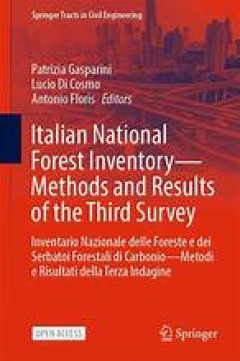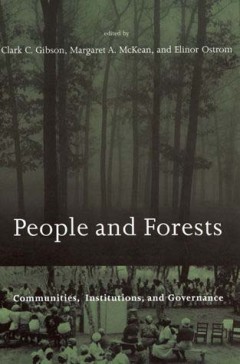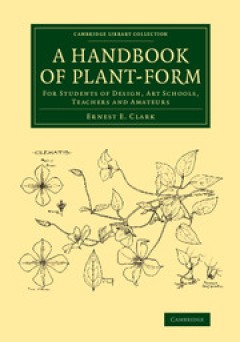Filter by

Italian National Forest Inventory—Methods and Results of the Third Survey
This open access book deals with the methods and the results of the third Italian national forest inventory (INFC2015). Arma dei Carabinieri is entrusted with the realisation of the National Forest Inventory and with the decisions about the aims of the survey and data treatment. National forest inventories produce statistically based information on forests over country areas. Such information i…
- Edition
- 1
- ISBN/ISSN
- 978-3-030-98678-0
- Collation
- -
- Series Title
- 1 b/w illustrations, 99 illustrations in colour
- Call Number
- XXXII, 576

Plantations and protected areas :a global history of forest management
"This book offers a historical perspective on the global proliferation of protected forest areas and productive timber plantations. It argues that a forest management divergence--the separation of wood production from the protection of forests--has occurred during the twentieth century as a result of globalisation. The book shows how plantations and protected areas evolved from, and then underm…
- Edition
- -
- ISBN/ISSN
- 9780262329910
- Collation
- 1 online resource (xiv, 201 pages) :illustrations.
- Series Title
- -
- Call Number
- -

Agricultural Implications of Fukushima Nuclear Accident (IV)
This open access book presents the findings from on-site research into radioactive cesium contamination in various agricultural systems affected by the Fukushima Daiichi Nuclear Power Plant accident in March 2011. This fourth volume in the series reports on studies undertaken at contaminated sites such as farmland and forests, focusing on soil, water, mountain, agricultural products, and animal…
- Edition
- -
- ISBN/ISSN
- 978-981-19-9360-2
- Collation
- XIII, 276
- Series Title
- -
- Call Number
- -

On the question proposed for disussion to the Botanical Congress at St. Peter…
Abbyy GZ,Animated GIF,Archive BitTorrent,DjVu,DjVuTXT,Djvu XML,Dublin Core,Item Tile,MARC,MARC Binary,MARC Source,Metadata,OCR Page Index,OCR Search Text,Page Numbers JSON,Scribe Scandata ZIP,Single Page Processed JP2 ZIP,Single Page Raw JP2 ZIP,Text PDF,chOCR,hOCR
- Edition
- -
- ISBN/ISSN
- -
- Collation
- 4 p. 23 cm
- Series Title
- -
- Call Number
- -

People and forests :communities, institutions, and governance
Unplanned deforestation, which is occurring at unsustainable rates in many parts of the world, can cause significant hardships for rural communities by destroying critical stocks of fuel, fodder, food, and building materials. It can also have profound regional and global consequences by contributing to biodiversity loss, erosion, floods, lowered water tables, and climate change. People and Fore…
- Edition
- -
- ISBN/ISSN
- 9780262273800
- Collation
- 1 online resource (xxiv, 274 pages) :illustrations, maps.
- Series Title
- -
- Call Number
- -

Instituting Nature: Authority, Expertise, and Power in Mexican Forests
Here, Mathews describes Mexico's efforts over the past hundred years to manage its forests through forestry science and biodiversity conservation. He shows that transparent knowledge was produced by encounters between the relatively weak forestry bureaucracy and the indigenous people who manage and own the pine forests of Mexico.OCLC-licensed vendor bibliographic record.
- Edition
- -
- ISBN/ISSN
- 9780262298537
- Collation
- 1 online resource (xii, 304 pages) :illustrations, maps.
- Series Title
- -
- Call Number
- -

A Handbook of Plant-Form For Students of Design, Art Schools, Teachers and A…
Written and richly illustrated by the Derby-born artist Ernest Ellis Clark (1869–1932), this guide was originally published in 1904 to demonstrate the decorative possibilities of certain plants, mainly English wild flowers, to art students sitting examinations in plant drawing and design. Clark emphasises the importance of retaining a certain amount of botanical accuracy and provides examples…
- Edition
- -
- ISBN/ISSN
- 9781107262225
- Collation
- -
- Series Title
- Cambridge Library Collection - Botany and Horticulture
- Call Number
- -

Insects and Diseases of Mediterranean Forest Systems
Insect and disease issues are often specific to the Mediterranean forest systems rather than shared with the temperate forests. In addition to the specific native insects and diseases, the forests are subject to the invasion of exotic species. The forests are also at risk from high degrees of human activity, including changing patterns of forest fires, land management activities, intensive pla…
- Edition
- -
- ISBN/ISSN
- 978-3-319-24742-7
- Collation
- VII, 892
- Series Title
- -
- Call Number
- 659 INS

A General View of the Writings of Linnaeus
Carl Linnaeus (1707–88), father of modern taxonomy, was one of the most important scientists of the eighteenth century. This biography was written by Richard Pulteney (1730–1801), a physician and botanist who greatly admired Linnaeus' methods and aimed to promote them in England. The first edition was published in 1781 and contains a thorough account of the major works of Linnaeus and his u…
- Edition
- William George Maton
- ISBN/ISSN
- 9781139095945
- Collation
- -
- Series Title
- Cambridge Library Collection - Botany and Horticulture
- Call Number
- -

A Garden of Pleasure
Eleanor Vere Boyle (1825–1916), who re-created the gardens of Huntercombe Manor in Berkshire in the 1870s, was a talented artist as well as an author, illustrating both poetry and books for children. Coming from an aristocratic family, and in later life a friend of Queen Alexandra, she produced sketches and watercolours admired by Ruskin and Landseer, and Tennyson and Bulwer Lytton contribute…
- Edition
- -
- ISBN/ISSN
- 9781107741805
- Collation
- -
- Series Title
- Cambridge Library Collection - Botany and Horticulture
- Call Number
- -
 Computer Science, Information & General Works
Computer Science, Information & General Works  Philosophy & Psychology
Philosophy & Psychology  Religion
Religion  Social Sciences
Social Sciences  Language
Language  Pure Science
Pure Science  Applied Sciences
Applied Sciences  Art & Recreation
Art & Recreation  Literature
Literature  History & Geography
History & Geography